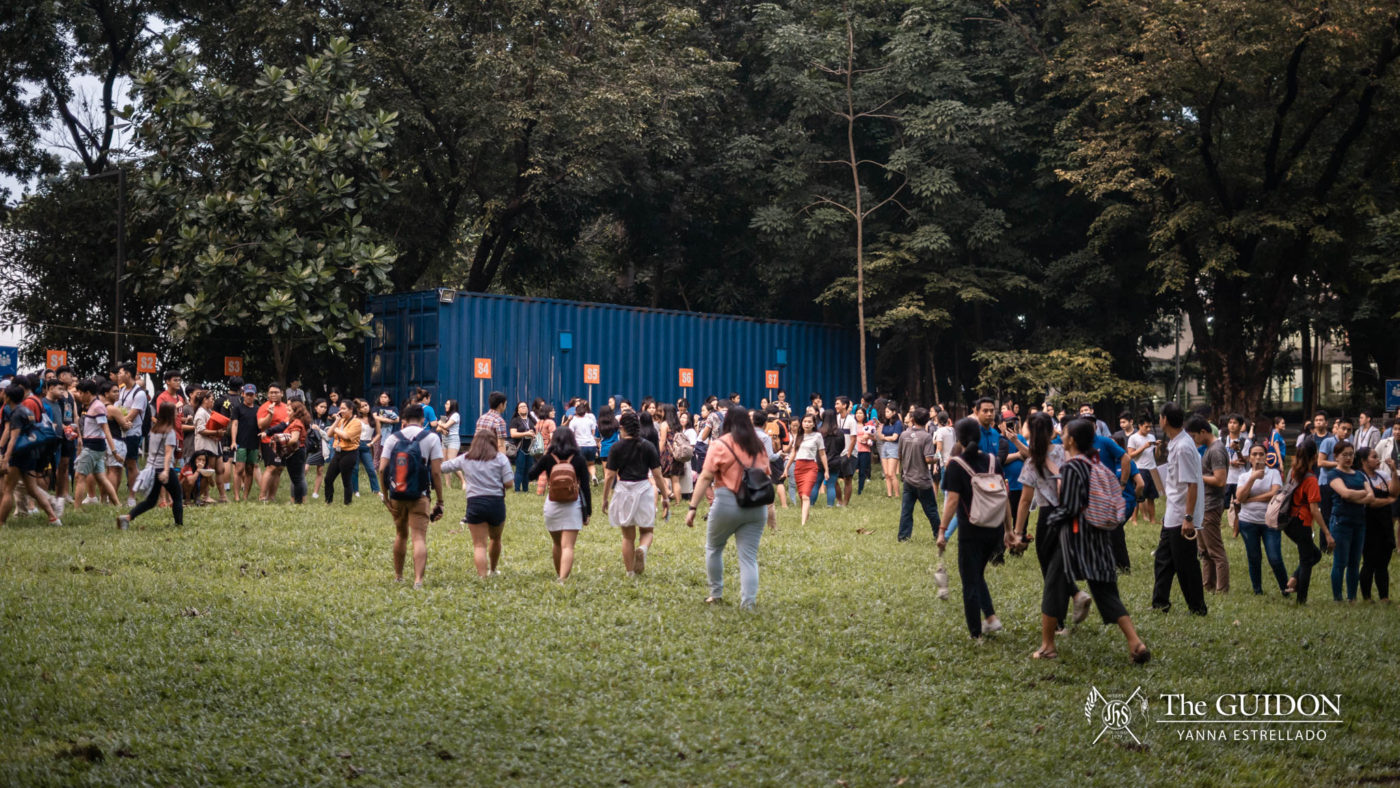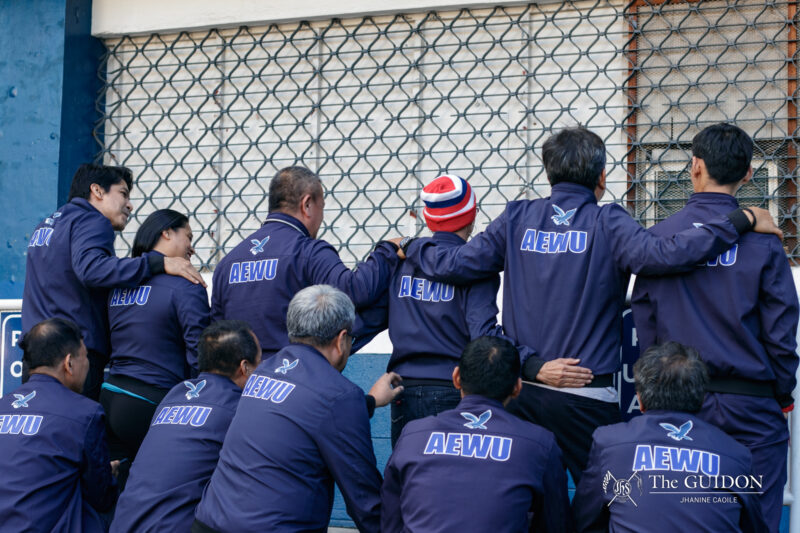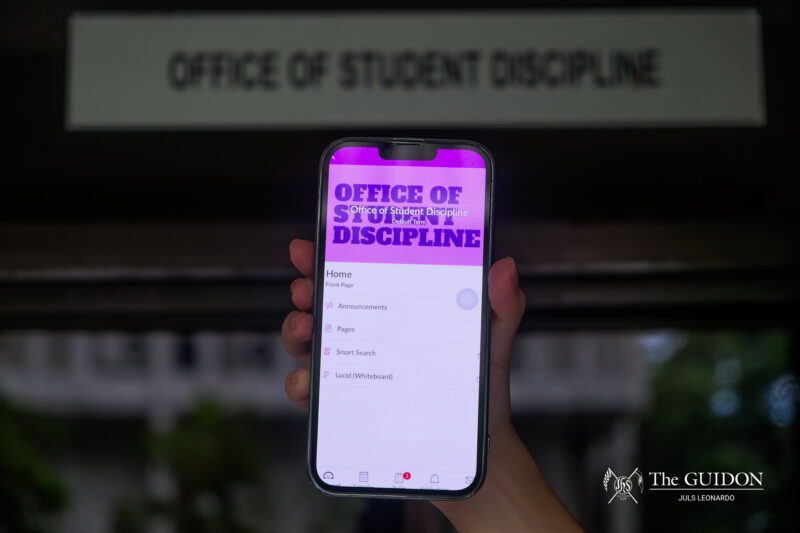FOR THE past two years, the number of Loyola School (LS) students who cooperate in the annual Earthquake, Fire, and Imminent Threat Drills has dwindled. According to LS Local Unit Emergency Response Team (LUERT) Head Chris Castillo, many of the students have been exiting campus during the evacuation drills since their participation is not mandatory.
Castillo claims that one of the main reasons as to why most LS students refuse to partake in these drills is because they think these are an inconvenience.
In light of this, Campus Safety and Mobility Office Director Marcelino Mendoza maintained the importance of emergency drills: “There are factors that we cannot control when an emergency happens. To minimize casualties, we have to be serious in following the instructions [in these drills].”
Due to the declining number of LS participants in the annual emergency evacuation drills, the administration is looking into how it can strengthen drill protocols in hopes of ensuring participation from the entire student body.
Current protocol
According to Mendoza, the annual Earthquake, Fire, and Imminent Threat Drills are conducted on campus at the same time and on the same date for all units in the Ateneo.
The evacuation drills are spearheaded by the LUERT in cooperation with the University Emergency Management Team (UEMT). The UEMT operates as the branch of the LUERT that handles the Loyola Schools and takes charge of the drills for the University.
Castillo explained that a LUERT is assigned to each unit in the Ateneo—from grade school to the professional schools. In particular, the LS LUERT heads the drill operations for college students.
Since conducting the drills would mean extending school hours and altering dismissal times, Mendoza explained the need for the Grade School and High School LUERTS to notify the parents and guardians who will pick up the students.
Castillo added that information about these drills reaches most LS students, regardless of whether the LS LUERT announces the schedule to them or not.
“The grade school and high school need to announce the time to the parents. Eh pag inannounce mo na sa isang unit, kahit na hindi natin inannounce [sa LS] , nalaman nila yun, ‘yun na ‘yun (If one unit announces the drill, even if drills are unannounced here [in the LS], once they find out, that’s it),” he said.
Castillo mentioned that the students’ lack of enthusiasm and sense of urgency in doing these drills is an impediment to assessing how quickly students will move in the event of an emergency.
On the other hand, Castillo claimed that students move faster when attempting to leave campus to avoid participating in the drills.
“If there was an aerial shot, and there was one before, just before the start of the drill, you would find people rushing out [of the campus]. I wish that was the same sense of urgency and same pace they would have if they were in a drill,” said Castillo.
Student opinions
To strengthen safety and security on campus, Sanggunian President Quiel Quiwa agreed that the evacuation drills must be unannounced to simulate a real crisis.
“There’s no way we can predict emergencies, so it’s best to be prepared to face such situations as a community,” he said.
However, Quiwa recognized the difficulty that most LS students face in participating in these school-wide drills, attributing it to their different schedules which make it “difficult to require all students to attend at once.”
One LS undergraduate student named Jan* explained her own reasons for avoiding the evacuation drills: “I always associated them with spending at least an hour under the sun and just a hassle in general.”
For her, drills should not take up more than an hour and should be conducted at earlier or later times when the temperature is cooler to ensure that the exercises are more tolerable. She thinks that after these changes have been put in place, students like her may opt to participate in the evacuation drills more often.
Increasing participation
Despite the indifference many students feel towards these drills, Castillo stressed the importance of partaking in the evacuation simulations, as it increases one’s awareness in the event of an emergency.
In that regard, the LS LUERT has brainstormed possible ways to increase student attendance in the University-wide drills.
During a meeting with the UEMT, the LUERT proposed conducting campus evacuation drills that are unannounced for the entire Ateneo community. Castillo explained that this ensures that students do not exit campus during the drill proper and that they participate in the safety protocol “as if [the simulation] were a real [emergency].”
Aside from these, the LS LUERT has requested that faculty members and the Sanggunian remind their respective circles to participate in the evacuation drills as well.
“In the end, that’s all you can do really, tell them why it is important and ask them to please participate,” shared Castillo.
In a similar way, Quiwa thinks that the administration should augment the current protocols in place to ensure safety awareness on campus in times of disaster.
“[A] possible initiative that would support [this] is to require students in the InAF programs to attend safety talks on disaster response,” he said.
Castillo also introduced his idea to enforce a cut system where students who fail to participate in the evacuation drills will merit a cut in their class at the time of the drill. However, he said that it is very unlikely that this will be implemented.
Inasmuch as forced participation is not the ideal solution the administration has in mind, Castillo stressed the importance of knowing how these drills benefit everyone.
“At the end of the day, familiarity with what to do during these emergency situations is something that could save your life and the lives of the people around you,” Castillo said.
*Editor’s Note: The name of the interviewee has been changed at their request in order to protect their identity and privacy.







